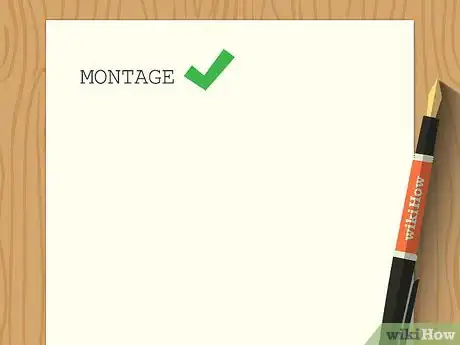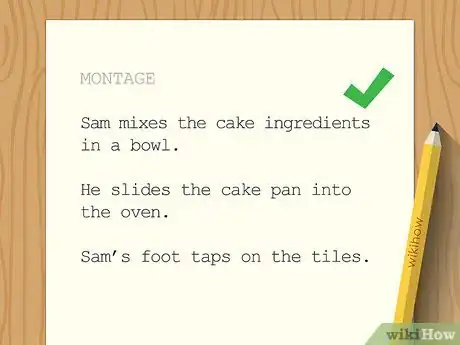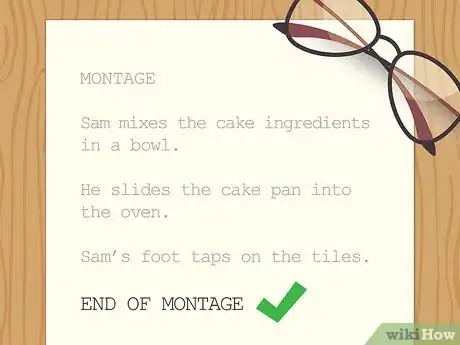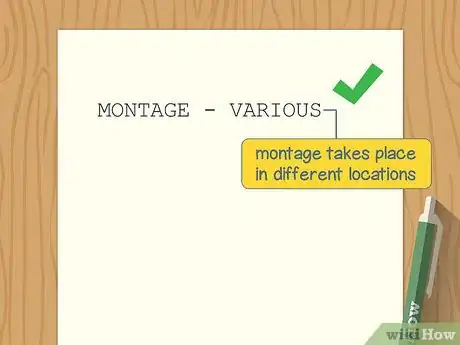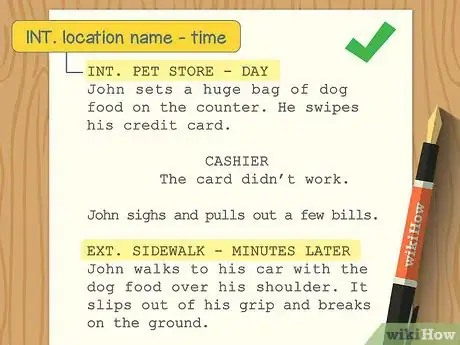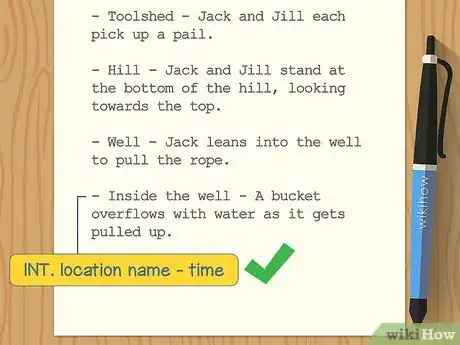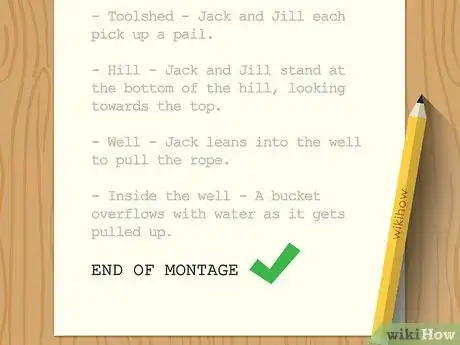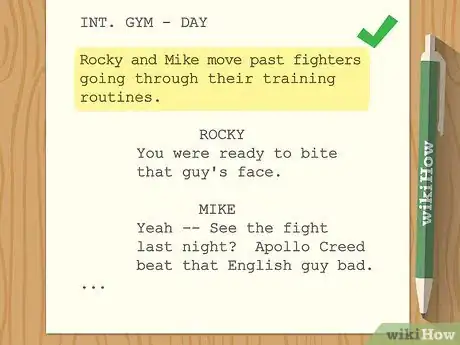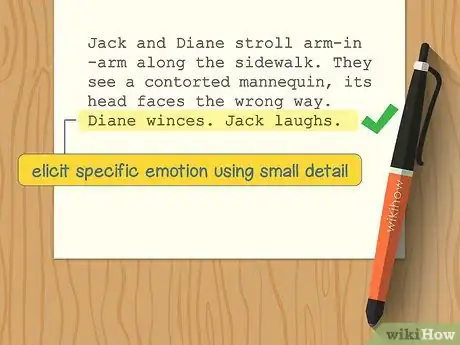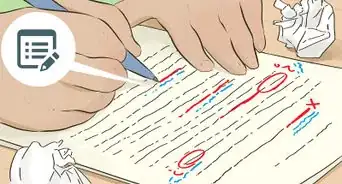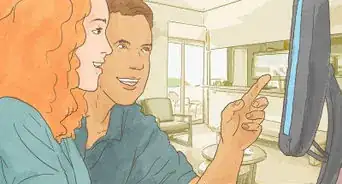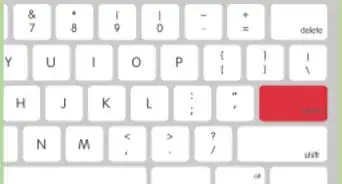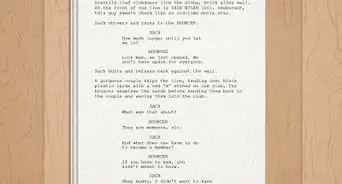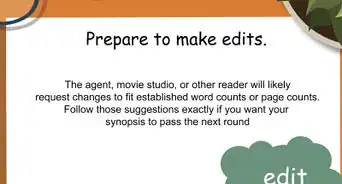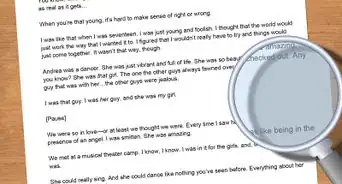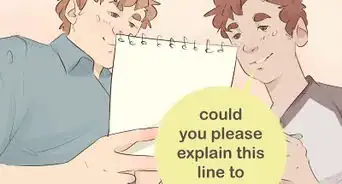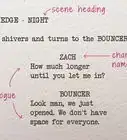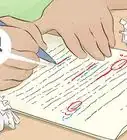This article was co-authored by Melessa Sargent and by wikiHow staff writer, Hunter Rising. Melessa Sargent is the President of Scriptwriters Network, a non-profit organization that brings in entertainment professionals to teach the art and business of script writing for TV, features and new media. The Network serves its members by providing educational programming, developing access and opportunity through alliances with industry professionals, and furthering the cause and quality of writing in the entertainment industry. Under Melessa's leadership, SWN has won numbers awards including the Los Angeles Award from 2014 through 2021, and the Innovation & Excellence award in 2020.
This article has been viewed 51,615 times.
A montage is a film technique that shows the passage of time in a few short seconds to keep a movie going. They can show a relationship starting to form, a training sequence where an amateur becomes a pro, or comparisons between characters. If you’re writing a screenplay, montages are really easy to include and format in your script. Montages can take place in a single location or multiple so your story quickly progresses. Whenever you use a montage, just make sure it matches the theme and tone of the script you’re working on!
Steps
Writing a Montage in a Single Location
-
1Write the word “MONTAGE” on a single line to note where it begins. Before your montage begins, start a new line with the word “MONTAGE” in all caps. This way, someone skimming through your script will know what to expect in the next few scenes.[1]
- You can choose to make the montage heading bold or underlined if you want it to stand out more in your script.
-
2Put each new part of your montage as a separate action line. Leave a double-space in between your montage heading and the action lines. Write a single line of action about what’s happening in the montage. Continue writing all the scenes, leaving a line break between each event that takes place.[2]
- For example, you may write your montage like:
Sam mixes the cake ingredients in a bowl.
He slides the cake pan into the oven.
Sam’s foot taps on the tiles.
He looks through the oven window to check his bake. - Include a dash in front of each action line if you want to add emphasis for when the scene changes.
Tip: Sometimes a montage can be condensed into a single line. For example, if your character is going into a changing room, you can simply write: "Jane goes in and out of the changing room, each time in a different dress.”
Advertisement - For example, you may write your montage like:
-
3Type “END OF MONTAGE” when all the scenes are complete. Leave a line break between the last event in your montage and the closing heading. Make sure to type it in all caps and follow the same formatting you used for when you started the montage. This helps readers know when the screenplay returns to normal.[3]
Creating a Montage over Multiple Locations
-
1Put “MONTAGE - VARIOUS” on a single line to start. Make sure you put your heading on a new line so it stands out in your screenplay. Put a dash and the word “VARIOUS” after the first heading so a reader knows that the montage takes place in different locations.[4]
Tip: You can also make your montage heading the events of what happens throughout it. For example, it may say “MONTAGE - JACK’S FIRST DATES” to show multiple dates that Jack has gone on.
-
2Make a scene heading for each new location if multiple things happen there. If your scene has people talking or many important events taking place, write each event in the montage as a new scene. Start with INT. or EXT. before writing the location and time of day in the scene heading. Then write the action and dialogue that happens in the scene. Keep writing each scene this way until you’ve written all of the events.[5]
- For example, your montage may look like:
INT. PET STORE - DAY
John sets a huge bag of dog food on the counter. He swipes his credit card.CASHIER
The card didn’t work.
John sighs and pulls out a few bills.
EXT. SIDEWALK - MINUTES LATER
John walks to his car with the dog food over his shoulder. It slips out of his grip and breaks on the ground.JOHN
Are you kidding me?
INT. JOHN’S CAR - MINUTES LATER
John angrily drives. Dog food spills out onto the back seat as he makes a turn. - Make sure to only use 3-4 scenes in this type of montage since it takes up a lot of room on the page.
- For example, your montage may look like:
-
3Use a bulleted list with simple scene descriptions if only simple actions take place. If a single action happens in each location, you can easily use a bulleted list to keep your montage concise on the page. Put a dash before writing a simple scene description, then put another dash before writing your action. Leave a line break between each event.
- For example, your montage may look like:
- Toolshed - Jack and Jill each pick up a pail.
- Hill - Jack and Jill stand at the bottom of the hill, looking towards the top.
- Well - Jack leans into the well to pull the rope.
- Inside the well - A bucket overflows with water as it gets pulled up.
EXPERT TIPMelessa Sargent is the President of Scriptwriters Network, a non-profit organization that brings in entertainment professionals to teach the art and business of script writing for TV, features and new media. The Network serves its members by providing educational programming, developing access and opportunity through alliances with industry professionals, and furthering the cause and quality of writing in the entertainment industry. Under Melessa's leadership, SWN has won numbers awards including the Los Angeles Award from 2014 through 2021, and the Innovation & Excellence award in 2020.Professional Writer
 Melessa Sargent
Melessa Sargent
Professional WriterTry to keep your sentences as short as possible. Melessa Sargent, the President of Screenwriters Network, says: "If you write a montage out as long paragraphs, it's going to be a lot of reading for someone. It's better to break it up in short sentences, and keep about 3-4 sentences per paragraph. The more white space you leave on the page, the easier it will be to read. It will be more cost-effective to produce, as well."
- For example, your montage may look like:
-
4Write “END MONTAGE” after you’ve completed all the scenes. After you’ve written all of the events or scenes, leave a line break between your last event and the “END MONTAGE” heading. This way, a reader will know that scenes will continue as normal.[6]
Choosing Scenes for Your Montage
-
1Create a training montage to show a character getting better at something. Many training montages are done in action or sports movies to show the main character improving their skills. At the beginning of the montage, they might get tired or can’t complete a certain exercise, but by the end, their hard work should pay off so they can succeed.[7]
- Examples of good training montages can be found in the screenplays for Rocky and Star Wars - The Empire Strikes Back.
- You may also use a training montage that isn’t action-oriented, such as learning to bake or sew.
-
2Write scenes of a relationship to show people falling in love. Use scenes in your montage to show various dates from the start of a relationship up to the present time. The two people may not like each other’s company at first, but short scenes in your montage can show how they grow to appreciate and like one another. Use your montage to show cute things happening between both of them.[8]
- For example, in the film Annie Hall, there’s a montage of a couple going on a road trip. Over the course of the montage, the viewer catches glimpses of their relationship developing.
-
3Use montages to compare and contrast different characters. Characters can react to the same circumstances in different ways. Use your montage to show how each character handles their routine, such as getting ready in the morning or getting to work. Make sure the images in each character’s lives are similar to the other’s but have them approach it in a different style.[9]
- An example of a compare and contrast montage can be found in The Nightmare Before Christmas to show how Halloweentown and Christmastown both prepare for Christmas differently.
-
4Show small details to help elicit a specific emotion. Sometimes, montages simply portray emotion without moving the story forward. Think about images that you’d associate with a certain feeling, and use those clips together to create an emotion.[10]
- For example, if you want to convey a feeling of loneliness or depression, you may include shots in your montage of a sink filled with dishes, a torn photograph, or someone asleep in bed during the day.
Warnings
- Use montages sparingly in your script since they can get overwhelming to a reader. Only use a maximum of 2-3 montages.⧼thumbs_response⧽
References
- ↑ https://johnaugust.com/2004/formatting-a-montage-sequence
- ↑ https://screenwriting.io/how-do-you-format-a-montage-in-a-screenplay/
- ↑ https://johnaugust.com/2004/formatting-a-montage-sequence
- ↑ https://screenwriting.io/how-do-you-format-a-montage-in-a-screenplay/
- ↑ https://johnaugust.com/2004/formatting-a-montage-sequence
- ↑ https://screenwriting.io/how-do-you-format-a-montage-in-a-screenplay/
- ↑ https://nofilmschool.com/2015/12/10-different-kinds-montages-can-help-make-your-film-more-dynamic
- ↑ https://nofilmschool.com/2015/12/10-different-kinds-montages-can-help-make-your-film-more-dynamic
- ↑ https://nofilmschool.com/2015/12/10-different-kinds-montages-can-help-make-your-film-more-dynamic
